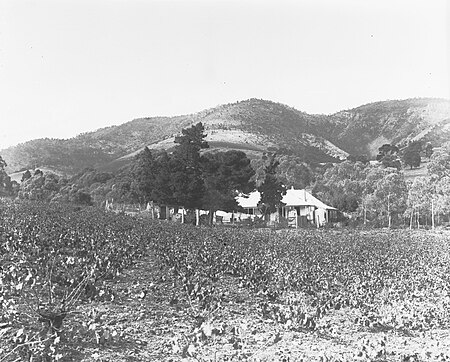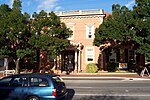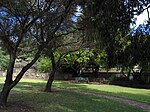Stonyfell, South Australia
Suburbs of AdelaideUse Australian English from July 2019

Stonyfell is an eastern suburb in the foothills of Adelaide, Australia, within the council area of the City of Burnside. It has parks with walking tracks, and two creeks running through it. St Peter's Collegiate Girls' School is the only school in Stonyfell. There is a quarry and a winery, the present-day remnants of industries dating back to the early days of the colonisation of South Australia.
Excerpt from the Wikipedia article Stonyfell, South Australia (License: CC BY-SA 3.0, Authors, Images).Stonyfell, South Australia
Penfold Road, Adelaide Stonyfell
Geographical coordinates (GPS) Address Nearby Places Show on map
Geographical coordinates (GPS)
| Latitude | Longitude |
|---|---|
| N -34.935 ° | E 138.678 ° |
Address
Former Stonyfell Winery
Penfold Road
5066 Adelaide, Stonyfell
South Australia, Australia
Open on Google Maps



